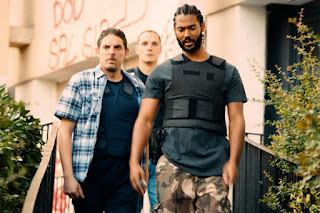'The Green Mile' - An Introspect into Magical Realism
When I was seven or so, the title ‘Carrie’ drew my interest. It was on the slot for 11 pm in the list of films that was to be telecasted on HBO. When I asked Appa about the film, he told me it is based on a book of the same name written by the master of horror writers, Stephen King. It was the first time I heard the name and I was fascinated. Years later, when I had to choose a topic for my college project, my guide lecturer turned down my idea of analysing a film’ s script. She encouraged me to go with analysing a post-1950 work of fiction. This made me think of choosing a book which was later adapted into a successful film, so that I can at least do something close to a film script analysis while working within the teacher’ s discretion. I skimmed through the list of the best book-to-film adaptations and found ‘The Green Mile’, an Oscar nominated film with Tom Hanks in the lead.
‘The Green Mile’ was originally written as a serialized novel by Stephen King. It was later adapted to film by Frank Darabont, who had previously directed ‘The Shawshank Redemption’ which was also based on King’s novella ‘Rita Hayworth and The Shawshank Redemption’. The novel exemplifies the genre of magical realism and wrestles with serious controversy, with universal conflicts inherent in the human condition and with the dark side of human nature. The power of magical realism is its ability to achieve the exact opposite of fantasy’s escapism. It creates stories with both fascinating qualities of fantasy and a sharp edge of reality. There are few writers who seem to be able to utilize this form as well as Stephen King.
 The narrative begins with Paul Edgecombe, an old man in the Georgia Pines nursing home sharing his story with fellow resident Elaine Connelly. In 1932, he was the block supervisor of the Cold Mountain Penitentiary death row nicknamed "The Green Mile" for the color of the floor's linoleum. This year marks the arrival of John Coffey, the ‘Magical Negro’ in the story and King's greatest invention. Throughout the story, Stephen King introduces a complete gallery of characters who build the everyday life of the block and create a sheltered atmosphere between the prisoners and the guards. Loaded with religious symbolism, the references to Biblical facts are omnipresent in the book. As a result, it is easy to realize that the life and death of John Coffey are similar to those of Jesus Christ. Even their initials are the same.
The narrative begins with Paul Edgecombe, an old man in the Georgia Pines nursing home sharing his story with fellow resident Elaine Connelly. In 1932, he was the block supervisor of the Cold Mountain Penitentiary death row nicknamed "The Green Mile" for the color of the floor's linoleum. This year marks the arrival of John Coffey, the ‘Magical Negro’ in the story and King's greatest invention. Throughout the story, Stephen King introduces a complete gallery of characters who build the everyday life of the block and create a sheltered atmosphere between the prisoners and the guards. Loaded with religious symbolism, the references to Biblical facts are omnipresent in the book. As a result, it is easy to realize that the life and death of John Coffey are similar to those of Jesus Christ. Even their initials are the same.
The Green Mile reveals a few philosophical points as well. One of them is to dispute the traditional human fantasy of being immortal. King conveys the message that everything is not always the same as it appears. It also points out the idea that everyone is condemned and imprisoned in some way. It is true for the prisoners of E block who are sentenced to death, but can also apply to Mister Jingles, the pet mouse in its cage. Even to the elderly who stay in retirement homes. The story has the obvious goal of making its audience think about our society, and how little we have evolved in our judgment of others in 2000 years. From a religious angle, it gives a concrete image of Jesus' life and execution, making those events closer. Stephen King's point might have been to make the readers examine Jesus' fate with a deeper look, keeping in mind that what happened so long ago could happen again.



Comments
Post a Comment